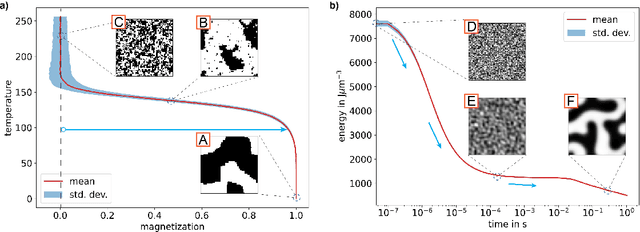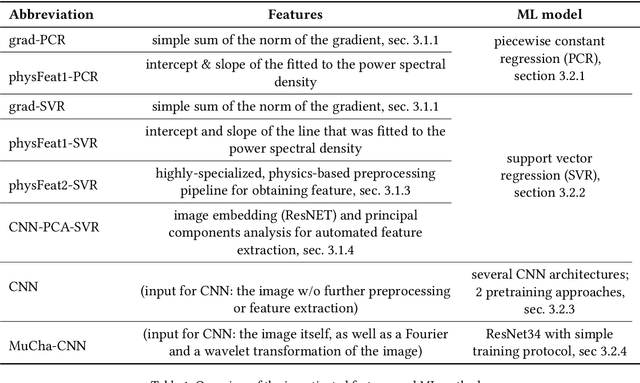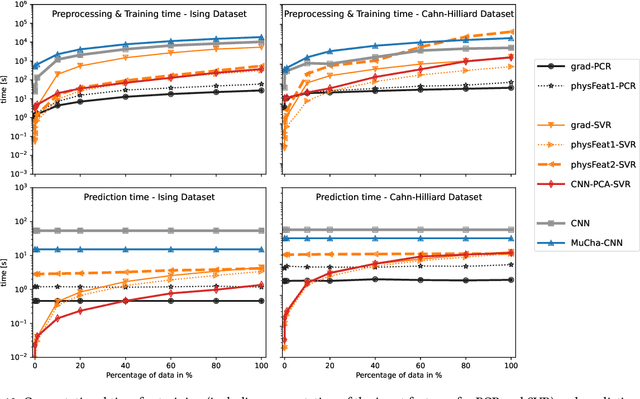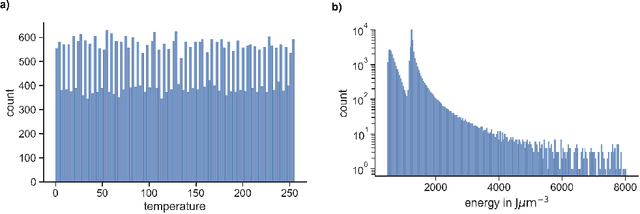Binh Duong Nguyen
Combining unsupervised and supervised learning in microscopy enables defect analysis of a full 4H-SiC wafer
Feb 20, 2024



Abstract:Detecting and analyzing various defect types in semiconductor materials is an important prerequisite for understanding the underlying mechanisms as well as tailoring the production processes. Analysis of microscopy images that reveal defects typically requires image analysis tasks such as segmentation and object detection. With the permanently increasing amount of data that is produced by experiments, handling these tasks manually becomes more and more impossible. In this work, we combine various image analysis and data mining techniques for creating a robust and accurate, automated image analysis pipeline. This allows for extracting the type and position of all defects in a microscopy image of a KOH-etched 4H-SiC wafer that was stitched together from approximately 40,000 individual images.
Efficient Surrogate Models for Materials Science Simulations: Machine Learning-based Prediction of Microstructure Properties
Sep 01, 2023



Abstract:Determining, understanding, and predicting the so-called structure-property relation is an important task in many scientific disciplines, such as chemistry, biology, meteorology, physics, engineering, and materials science. Structure refers to the spatial distribution of, e.g., substances, material, or matter in general, while property is a resulting characteristic that usually depends in a non-trivial way on spatial details of the structure. Traditionally, forward simulations models have been used for such tasks. Recently, several machine learning algorithms have been applied in these scientific fields to enhance and accelerate simulation models or as surrogate models. In this work, we develop and investigate the applications of six machine learning techniques based on two different datasets from the domain of materials science: data from a two-dimensional Ising model for predicting the formation of magnetic domains and data representing the evolution of dual-phase microstructures from the Cahn-Hilliard model. We analyze the accuracy and robustness of all models and elucidate the reasons for the differences in their performances. The impact of including domain knowledge through tailored features is studied, and general recommendations based on the availability and quality of training data are derived from this.
 Add to Chrome
Add to Chrome Add to Firefox
Add to Firefox Add to Edge
Add to Edge